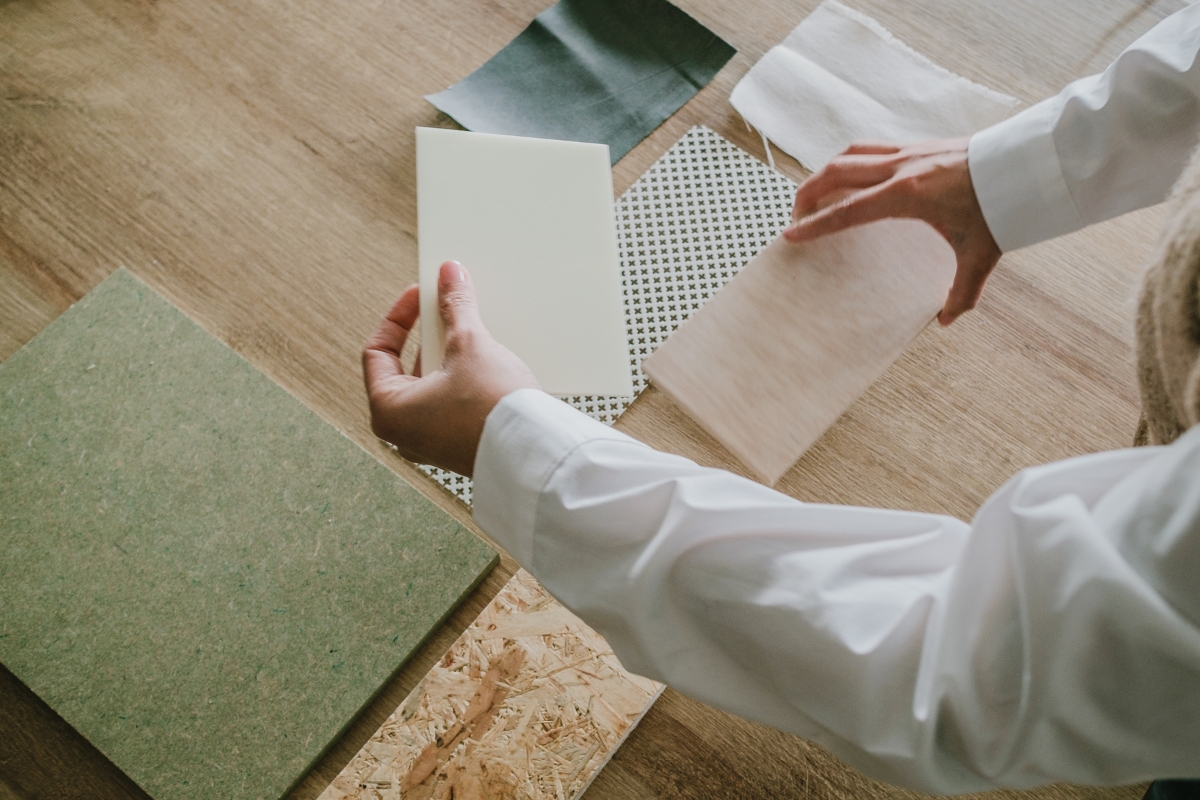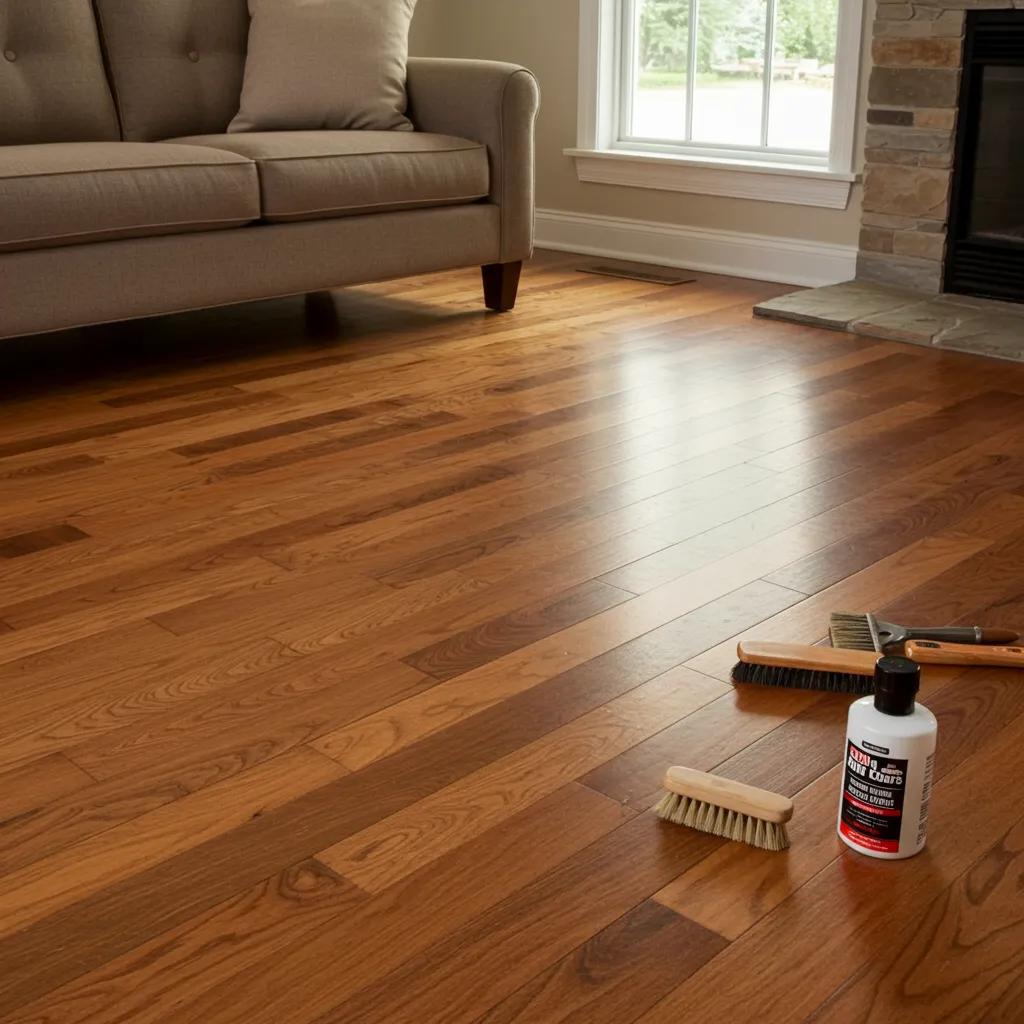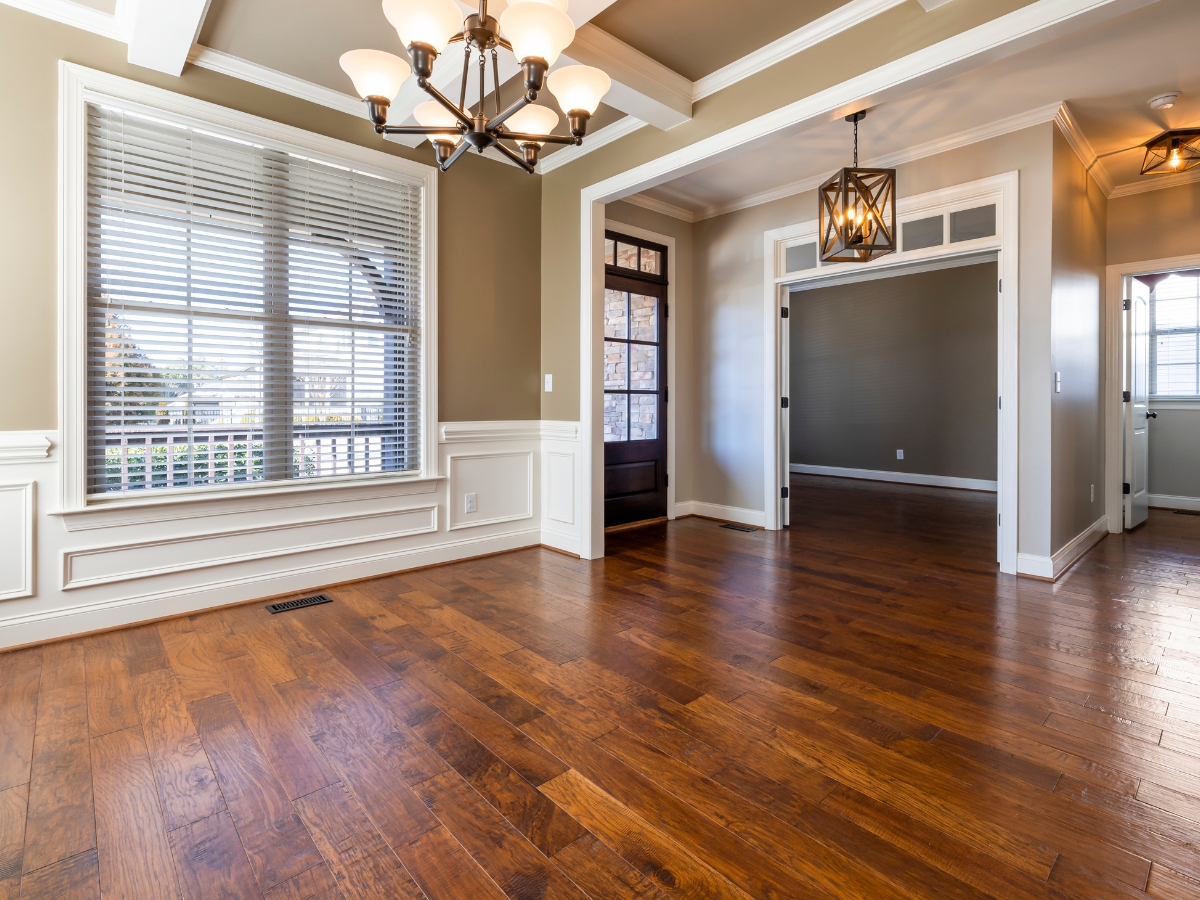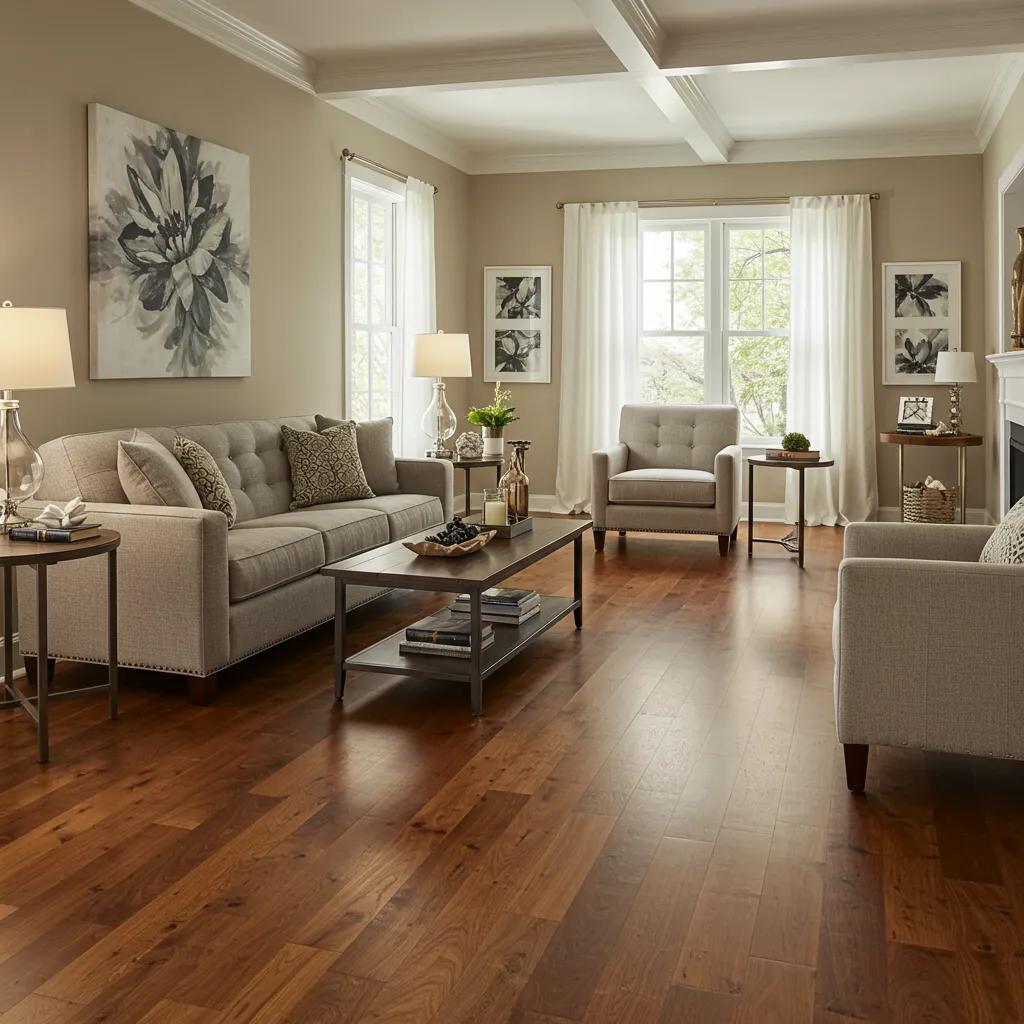Transforming your home into an eco-friendly haven begins with making sustainable choices in every aspect of your living space, and flooring is no exception. Sustainable flooring options not only reduce environmental impact but also contribute to a healthier indoor environment.
In this guide, we’ll share expert green home tips for selecting and installing sustainable flooring materials that are both beautiful and environmentally responsible. Discover how you can make eco-conscious decisions that enhance your home’s aesthetics and sustainability.
Whether you’re renovating your entire house or just updating a single room, these tips will help you create a stylish, greener home with flooring choices that align with your commitment to the planet.
Looking for Sustainable Flooring? Check Out These Green Living Tips!
Benefits of Choosing Eco-Friendly Materials for Your Floors
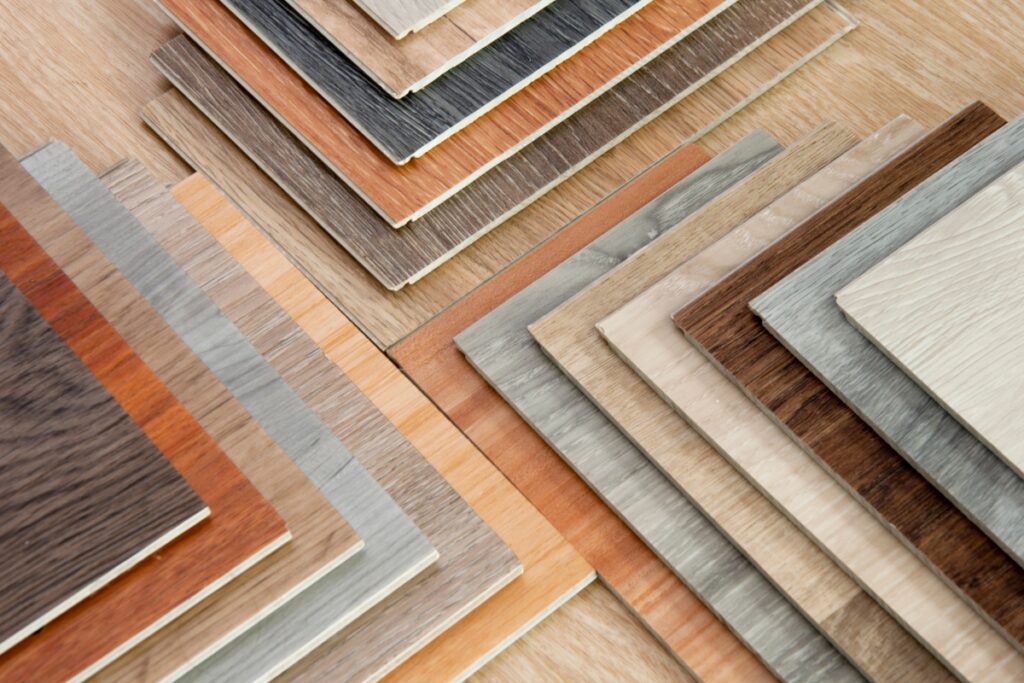
Choosing eco-friendly materials for your floors goes beyond just being environmentally conscious; it also offers several advantages for you as a homeowner. Green living tips like opting for sustainable flooring can improve indoor air quality by reducing the presence of harmful chemicals commonly found in conventional flooring materials.
Eco-friendly home floors are often made with natural materials that do not emit volatile organic compounds (VOCs), which can cause respiratory issues and other health problems. By choosing sustainable flooring, you are creating a healthier living environment for you and your family.
Additionally, sustainable flooring options are known for their durability. Materials like reclaimed wood and bamboo are incredibly resilient and can withstand the test of time. This means that you won’t have to worry about replacing your floors frequently, saving you money in the long run.
Reclaimed Wood: Adding Character and History to Your Home
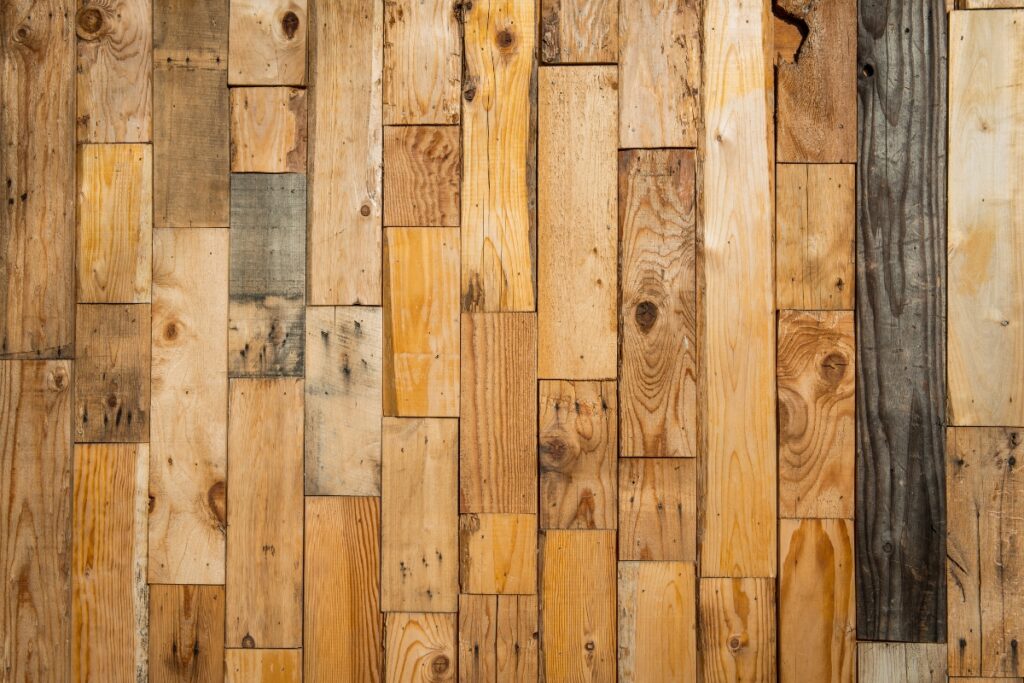
Reclaimed wood is a popular choice among homeowners who want to add a touch of character and history to their living spaces. This type of flooring is made from salvaged wood that has been repurposed from old buildings, barns, or even wine barrels.
One of the main advantages of using reclaimed wood is its unique aesthetic appeal. Each piece of reclaimed wood has its own distinct characteristics, such as knots, grain patterns, and even nail holes. These imperfections add charm and personality to your floors, making them truly one-of-a-kind.
In addition to its visual appeal, reclaimed wood is also an environmentally friendly choice. By using salvaged wood instead of cutting down new trees, you are helping to conserve forests and reduce deforestation. This makes reclaimed wood an excellent option for those who want to make a positive impact on the environment while adding beauty to their homes.
Bamboo Flooring: Fast-Growing and Renewable Option
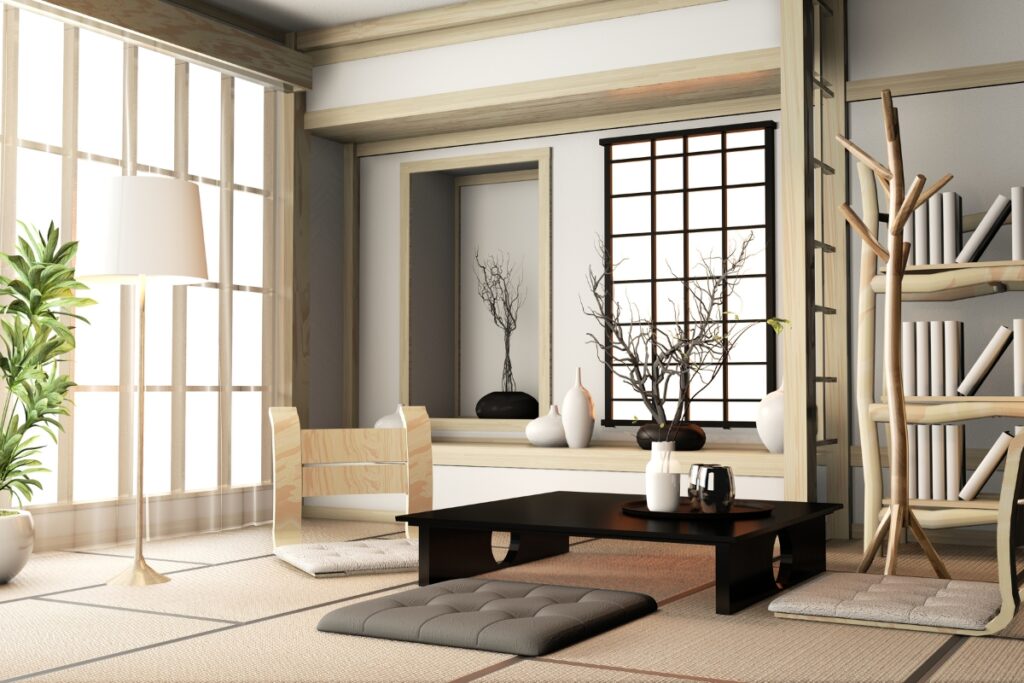
If you’re looking for a fast-growing and renewable flooring option, bamboo is an excellent choice. Bamboo is actually a grass rather than a tree, which means it grows much faster than traditional hardwood trees.
One of the key benefits of bamboo flooring is its sustainability. Bamboo plants can reach maturity in as little as three to five years, whereas hardwood trees can take several decades to grow. This rapid growth rate makes bamboo a highly renewable resource, making it an eco-friendly flooring option. The fast regeneration cycle of bamboo also means that it can be harvested without causing significant environmental impact, preserving forests and reducing deforestation.
In addition to its sustainability, bamboo flooring is also known for its durability. It is harder than many hardwoods and can withstand heavy foot traffic without showing signs of wear and tear. This makes it an ideal choice for busy households or commercial spaces. Furthermore, bamboo is resistant to moisture and insects, adding to its longevity and making it suitable for areas prone to humidity or pest issues.
Bamboo flooring also offers aesthetic versatility. It comes in various colors and grain patterns, allowing homeowners to choose a look that complements their interior design. Whether you prefer a natural, light finish or a darker, more dramatic appearance, bamboo flooring can adapt to a wide range of styles.
Maintenance of bamboo flooring is relatively easy. Regular sweeping and occasional mopping are usually sufficient to keep the floors looking pristine. Additionally, bamboo does not require harsh chemicals for cleaning, further contributing to its environmental benefits.
Cork Flooring: Natural, Comfortable, and Sustainable
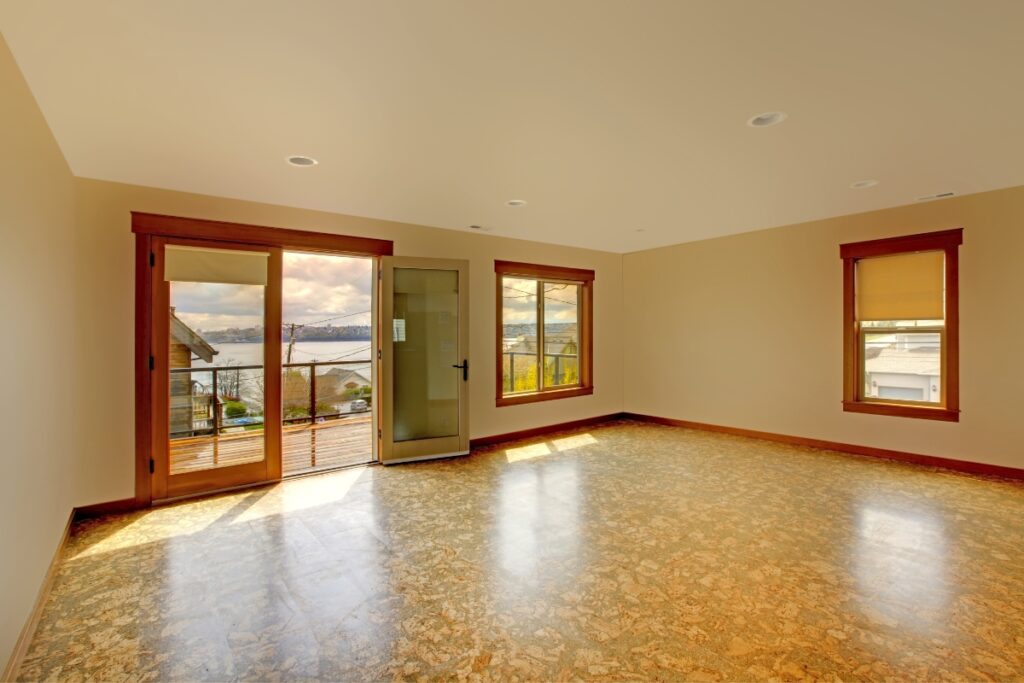
Cork flooring is a natural and sustainable option that offers many benefits. Cork is harvested from the bark of cork oak trees without harming them, allowing them to continue growing and absorbing carbon dioxide from the atmosphere. This sustainable harvesting process can be repeated every nine to twelve years, making cork an eco-friendly living choice for flooring.
One of the unique properties of cork is its natural cushioning effect. When you walk on a cork floor, it compresses slightly underfoot, providing a comfortable and supportive surface. This makes cork flooring an excellent choice for areas where you spend a lot of time standing, such as kitchens or home offices. The softness and resilience of cork can help reduce fatigue and strain on your joints, enhancing comfort during prolonged periods of standing.
In addition to its comfort, cork flooring also has excellent thermal and acoustic insulation properties. It helps to keep your home warm in winter and cool in summer while reducing noise transmission between floors. The cellular structure of cork contains millions of tiny air pockets, which contribute to its insulating qualities. This makes cork an energy-efficient flooring option, potentially lowering heating and cooling costs.
Cork flooring is also hypoallergenic and resistant to mold, mildew, and pests, making it a healthy choice for indoor environments. Its natural properties help to maintain indoor air quality and reduce the presence of allergens, which can be particularly beneficial for individuals with allergies or respiratory conditions.
Another advantage of cork flooring is its durability. While it may not be as hard as traditional hardwoods, cork’s natural resilience allows it to bounce back from minor dents and scratches. Additionally, cork flooring is often finished with a protective layer that enhances its resistance to wear and tear, ensuring longevity with proper care.
Cork flooring is available in a variety of colors and patterns, allowing homeowners to choose a style that complements their décor. From natural hues to stained options, cork can fit seamlessly into both modern and traditional interior designs. Its unique appearance, combined with its comfort and sustainability, makes cork flooring a versatile and attractive choice.
Linoleum: Durable and Biodegradable Flooring Choice
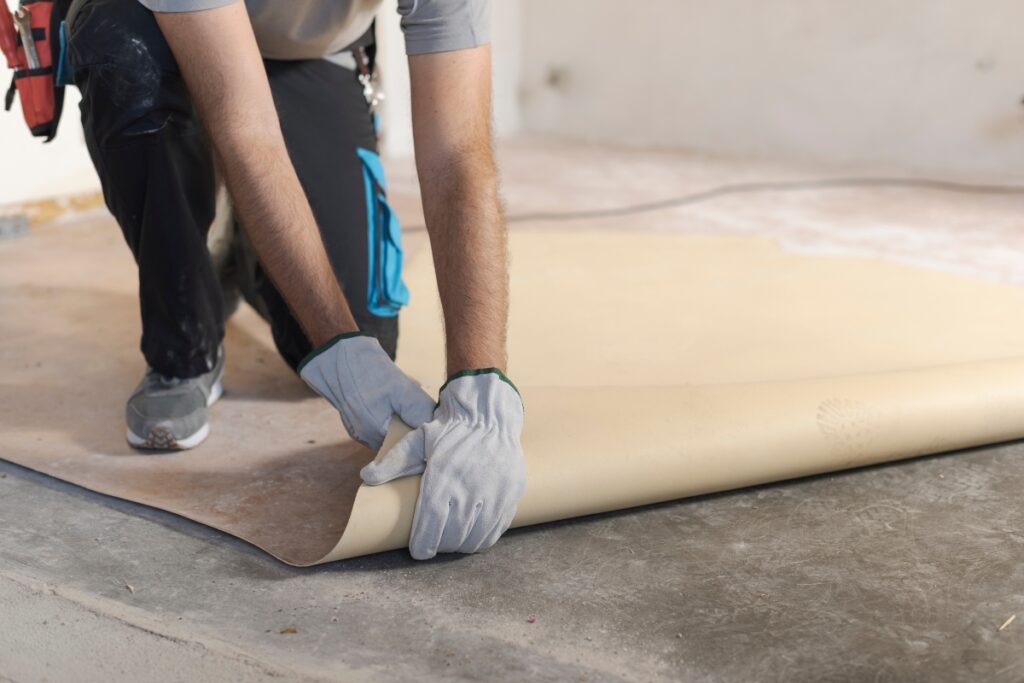
Linoleum is a durable and biodegradable flooring material that has been used for over 150 years. It is made from natural ingredients such as linseed oil, wood flour, pine resin, and jute fibers, making it an environmentally friendly option for both residential and commercial spaces.
Linoleum flooring is highly praised for its exceptional durability, being able to endure substantial foot traffic without displaying any wear and tear. This quality makes it a perfect choice for busy spaces such as kitchens, hallways, and commercial establishments.
Linoleum is also known for its resilience, able to bounce back from minor impacts and dents. Additionally, linoleum floors are resistant to water damage and staining when properly maintained, providing long-lasting performance in various environments.
Linoleum’s natural composition makes it hypoallergenic and antimicrobial, contributing to healthier indoor air quality. Its ability to repel dust and allergens is particularly beneficial for individuals with allergies or asthma. Moreover, the antimicrobial properties help prevent the growth of bacteria and mold, ensuring a clean and hygienic flooring surface.
Another benefit of linoleum is its biodegradability. At the end of its life cycle, linoleum flooring can be recycled or safely disposed of without harming the environment. This makes it a sustainable choice for those who are conscious of their ecological footprint. Unlike synthetic flooring options, linoleum decomposes naturally, returning to the earth without leaving harmful residues.
Linoleum is available in a wide range of colors, patterns, and finishes, allowing for versatile design possibilities. From vibrant, bold hues to subtle, natural tones, linoleum can complement various interior styles. Its ability to mimic the appearance of other materials, such as wood or stone, provides aesthetic flexibility for different design preferences.
Installation of linoleum flooring is relatively straightforward, and with proper care, it can last for decades. Regular cleaning with a damp mop and periodic polishing can keep linoleum looking fresh and vibrant. It is essential to use mild, pH-neutral cleaners to preserve the integrity of the material.
Furthermore, linoleum is a cost-effective flooring solution. Its longevity and low maintenance requirements make it an economical choice in the long run. The initial investment is often offset by its durability and the reduced need for frequent replacements or extensive upkeep.
In addition to its practical benefits, linoleum flooring also offers excellent acoustic properties. Its natural composition helps absorb sound, reducing noise levels within a space. This makes it an ideal choice for multi-story buildings, offices, and homes where noise reduction is desirable.
Recycled Glass Tiles: Stylish and Environmentally Friendly
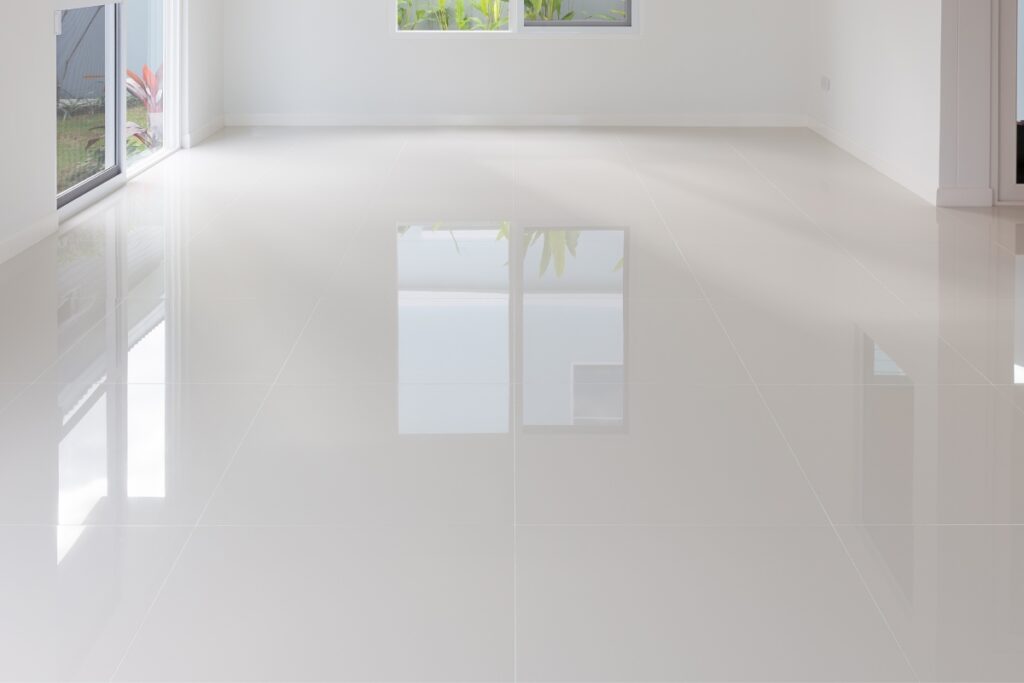
Recycled glass tiles are a stylish and environmentally friendly option for those looking to add a touch of elegance to their floors. These tiles are made from recycled glass bottles and other glass waste, reducing the demand for new raw materials and diverting waste from landfills.
One of the key benefits of recycled glass tiles is their unique appearance. They come in a wide range of colors and patterns, allowing you to create stunning designs that reflect your personal style. The reflective properties of glass also help to enhance natural light in your space, making it feel brighter and more spacious. Whether you prefer vibrant hues or subtle tones, recycled glass tiles can be customized to suit any aesthetic, adding a modern and sophisticated touch to your interiors.
In addition to their aesthetic appeal, recycled glass tiles are also durable and easy to maintain. They are resistant to stains, scratches, and moisture, making them suitable for various areas in your home, including bathrooms, kitchens, and even outdoor spaces. Their non-porous nature means they do not absorb liquids, which helps prevent mold and mildew growth, ensuring a clean and hygienic surface.
Recycled glass tiles are also an excellent choice for underfloor heating systems. Their ability to conduct heat efficiently means they can help keep your floors warm during colder months, enhancing comfort and energy efficiency. This makes them a versatile option for both residential and commercial spaces where temperature regulation is important.
Moreover, the production process of recycled glass tiles is eco-friendly. Manufacturing these tiles requires less energy compared to producing new glass, reducing greenhouse gas emissions. By choosing recycled glass tiles, you contribute to a more sustainable building practice and support the circular economy.
Furthermore, recycled glass tiles are not just limited to flooring. They can be used for backsplashes, countertops, and decorative wall features, providing a cohesive and environmentally conscious design throughout your home. Their versatility in application adds to their appeal as a sustainable design choice.
Tips for Maintaining and Caring for Sustainable Floors
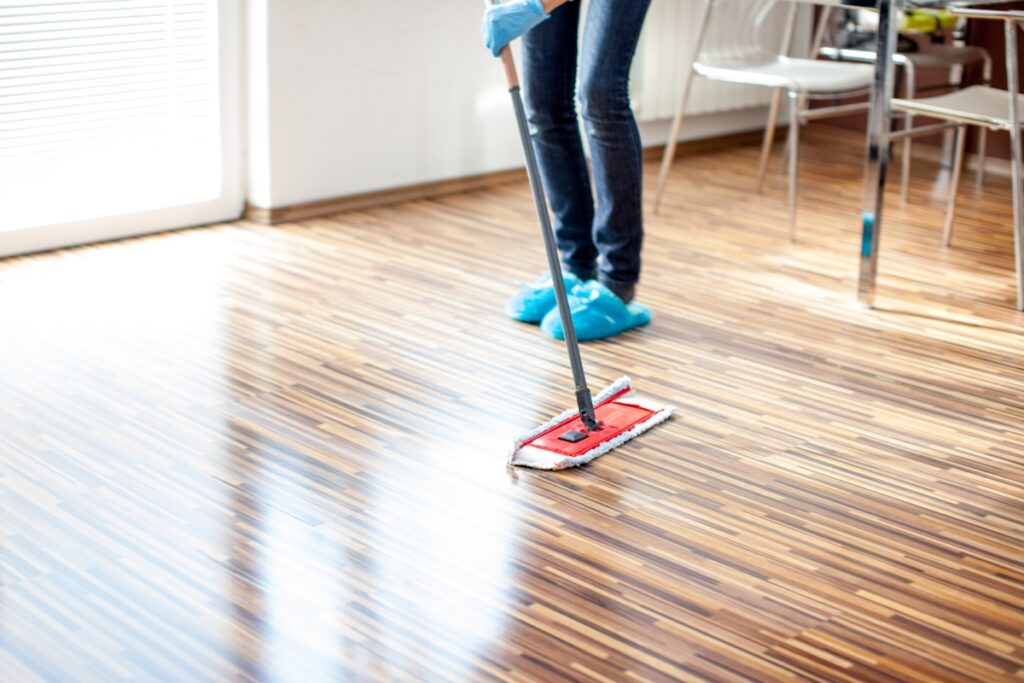
When it comes to maintaining and caring for sustainable floors in your green home, there are several tips you can follow to ensure their longevity and eco-friendliness. By incorporating these practices into your regular cleaning routine, you can not only preserve the beauty of your floors but also contribute to a more sustainable environment.
To start with, one of the key aspects of maintaining sustainable floors is to use environmentally friendly cleaning products. Opt for natural cleaners or DIY solutions that are gentle on the floors and free from harsh chemicals. This not only helps in preserving the integrity of the flooring material but also minimizes the impact on the environment.
Regular sweeping and vacuuming are essential to prevent dirt and debris from scratching the surface of your sustainable floors. Use a soft-bristled broom or a vacuum with a hardwood floor attachment to effectively remove dust and particles without causing any damage.
In areas prone to spills or moisture, such as the kitchen or bathroom, make sure to wipe up any spills immediately to prevent water damage or staining. Use a damp microfiber cloth or mop to clean the floors, avoiding excessive moisture that can warp or degrade the flooring material over time.
Invest in high-quality rugs or mats to protect high-traffic areas and prevent wear and tear on your sustainable floors. Place them at entrances and strategic locations to trap dirt and prevent it from being tracked onto the floors, extending their lifespan.
Avoid using abrasive cleaners, wax, or polish on sustainable floors as they can leave a residue, attract more dirt, and diminish the true green living properties of the flooring material. Stick to manufacturer-recommended cleaning methods and products to ensure proper care and maintenance.
By following these green home tips for sustainable flooring, you can enjoy beautiful and eco-friendly floors for years to come, contributing to a healthier indoor environment and a more sustainable lifestyle.
Integrating Sustainable Flooring into Different Rooms of Your Home
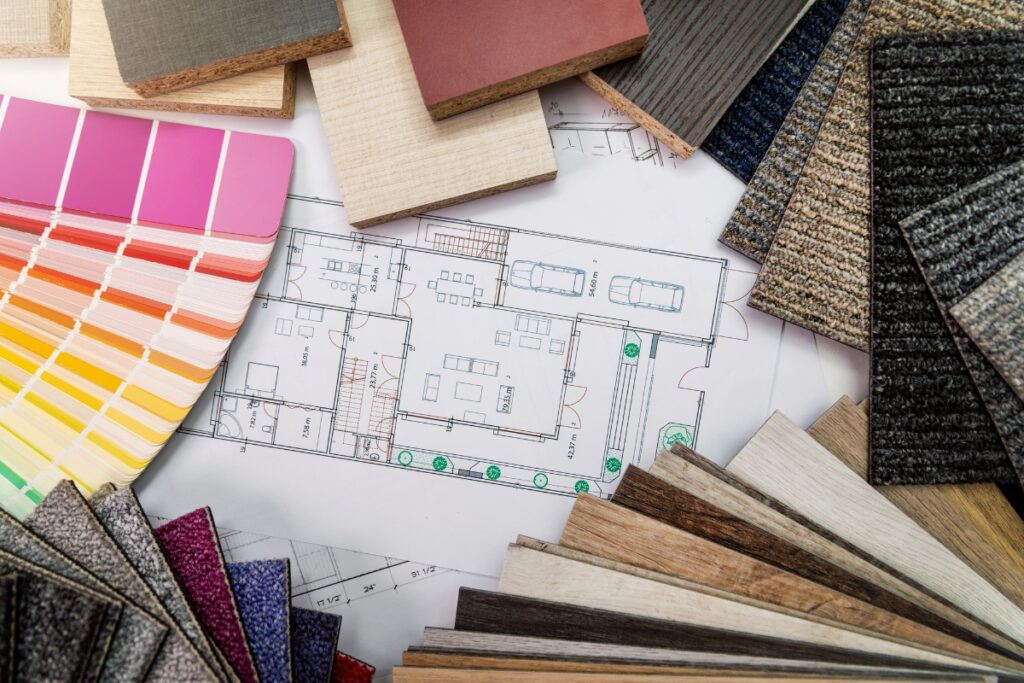
Sustainable flooring can be incorporated into various rooms of your home, adding beauty and eco-friendliness to each space. Here are some ideas for integrating sustainable flooring into different areas:
- Living Room: Reclaimed Wood Floors: Reclaimed wood floors offer a unique charm and warmth, creating a cozy and inviting atmosphere. Each plank carries a history, often showcasing character through its unique grain patterns and occasional imperfections. This type of flooring not only reduces the demand for new timber but also brings a sense of heritage and sustainability to your living space.
- Kitchen: Cork Flooring: Cork flooring is an excellent choice for kitchens due to its comfort and durability. It provides a cushioned surface that’s easy on the feet, ideal for standing and cooking for extended periods. Cork is also naturally resistant to water and heat, making it suitable for the kitchen environment. Additionally, its antimicrobial properties help maintain a clean and healthy kitchen space.
- Bathroom: Recycled Glass Tiles: In the bathroom, recycled glass tiles offer a stylish and water-resistant option. These tiles are not only eco-friendly but also add a touch of elegance with their reflective properties, which enhance the light and make the bathroom appear more spacious. Their non-porous nature makes them resistant to stains and mold, ensuring longevity and easy maintenance in a moisture-prone environment.
- Bedroom: Bamboo Flooring: Bamboo flooring in the bedroom can add a touch of elegance while being environmentally friendly. Its smooth texture and natural sheen create a serene and calming environment, perfect for relaxation. Bamboo is also durable and easy to clean, making it a practical yet stylish choice for a bedroom setting.
- Home Office: Linoleum: For a home office, consider linoleum flooring, which is durable and available in a variety of colors and patterns. Its resilience makes it ideal for rolling office chairs and heavy foot traffic. Linoleum’s natural composition also contributes to a healthier indoor air quality, creating a conducive environment for work.
- Dining Room: Engineered Wood: Engineered wood flooring is a sustainable option for dining rooms. It provides the beauty of hardwood with a more stable and eco-friendly structure. Made from layers of wood bonded together, it uses less hardwood overall and can withstand the occasional spills and high traffic typical in dining areas.
- Basement: Polished Concrete: Polished concrete floors are a sustainable choice for basements. They utilize the existing concrete slab, eliminating the need for additional materials. Polished concrete is durable, low-maintenance, and can be finished with eco-friendly sealers to enhance its appearance and longevity.
By selecting sustainable flooring materials that are suitable for each room’s specific needs, you can create a cohesive and environmentally conscious home design. Each material offers unique benefits tailored to the functionality and aesthetics of different spaces, ensuring that your home is not only beautiful but also kind to the planet.
Conclusion: Embracing Green Living with Sustainable Flooring
Choosing sustainable flooring is not only an excellent way to reduce your environmental impact but also an opportunity to create a beautiful and healthy living space. Whether you’re renovating your entire home or just updating one room at a time, embracing green living with sustainable flooring is a step towards creating a more sustainable future for generations to come.
Enhance the sustainability of your home with expert flooring tips from Diaz Hardwood Floors. Our eco-friendly flooring solutions combine beauty, durability, and environmental responsibility, making your home a greener, more comfortable place to live. Request a free quote from our website or call us today at 404-791-0444 to discuss your sustainable flooring options and schedule a consultation. Choose Diaz Hardwood Floors for top-quality, environmentally friendly flooring that transforms your home while caring for the planet.

